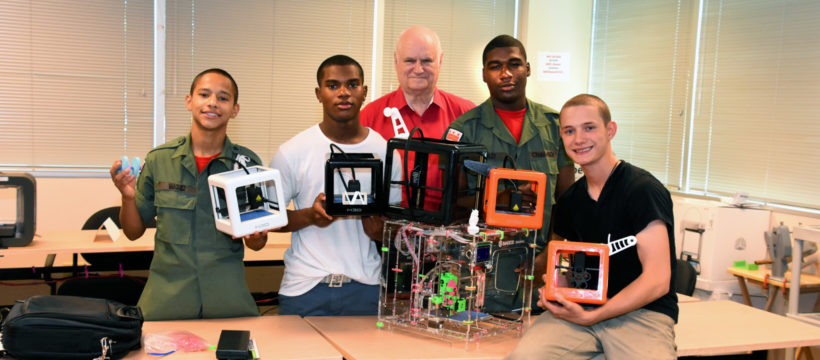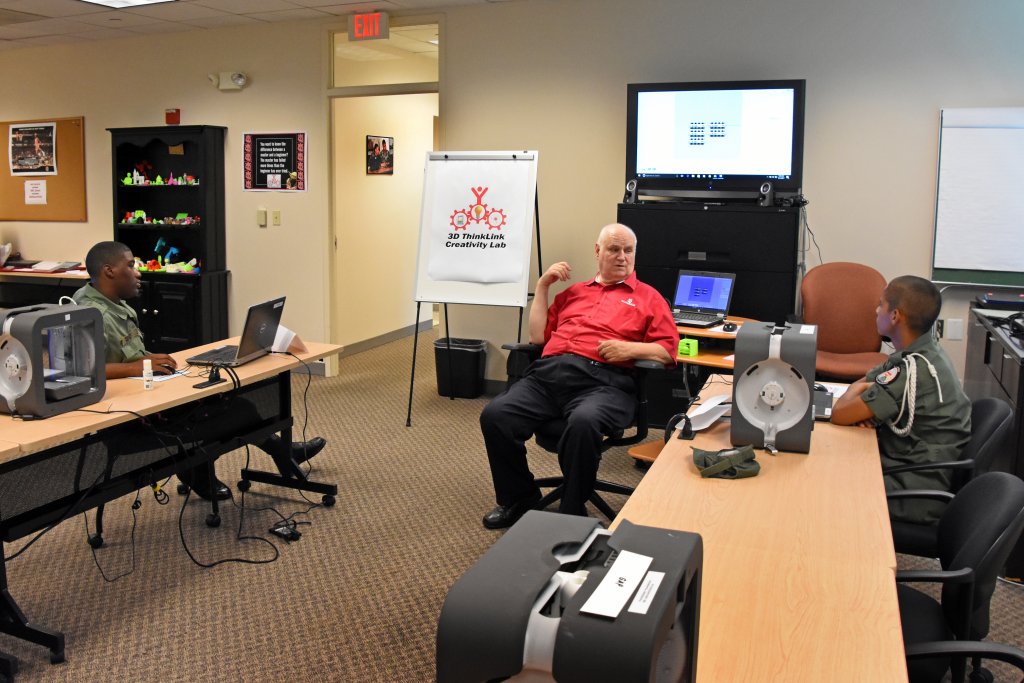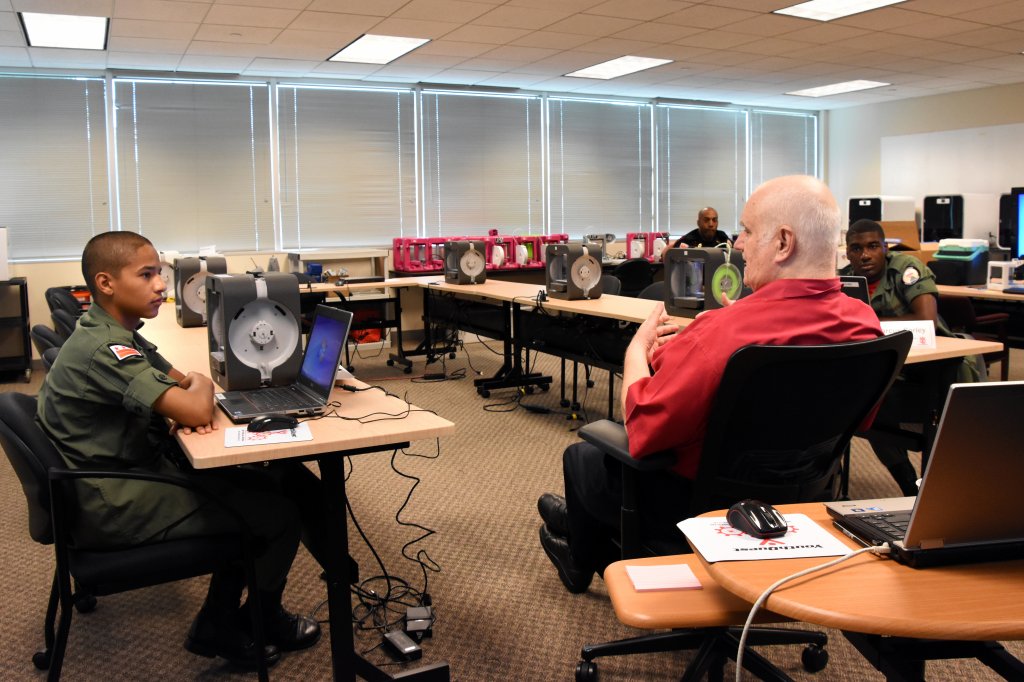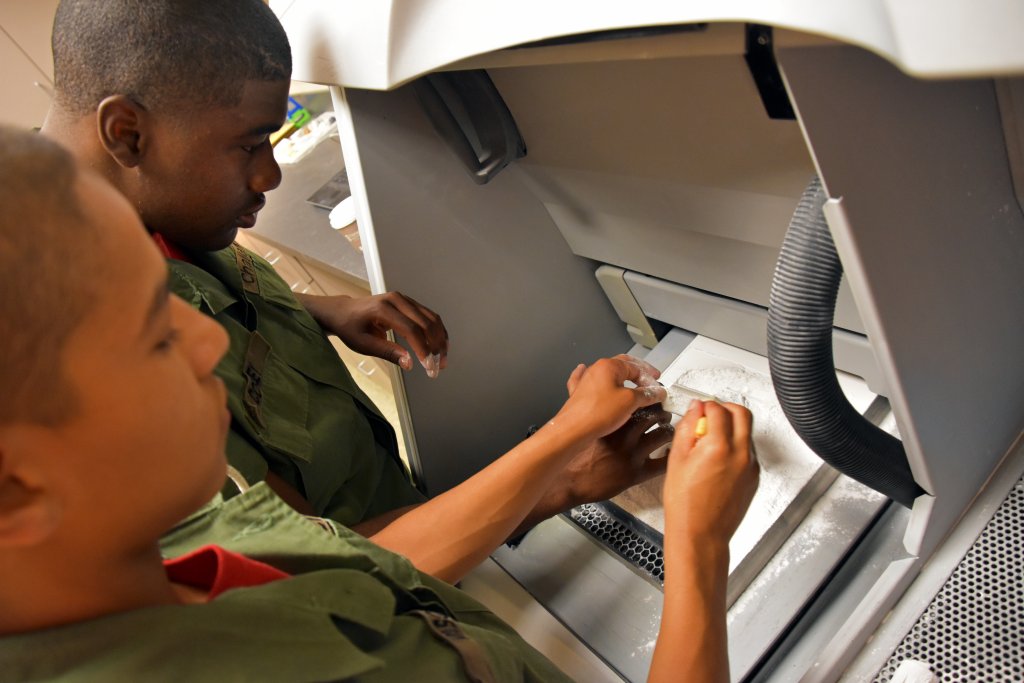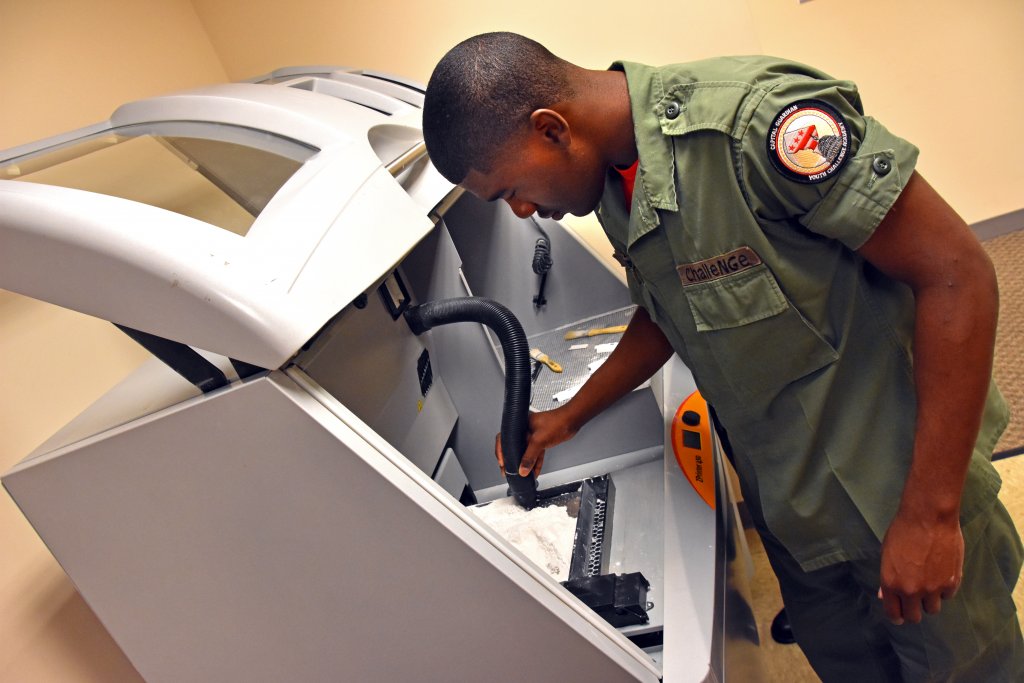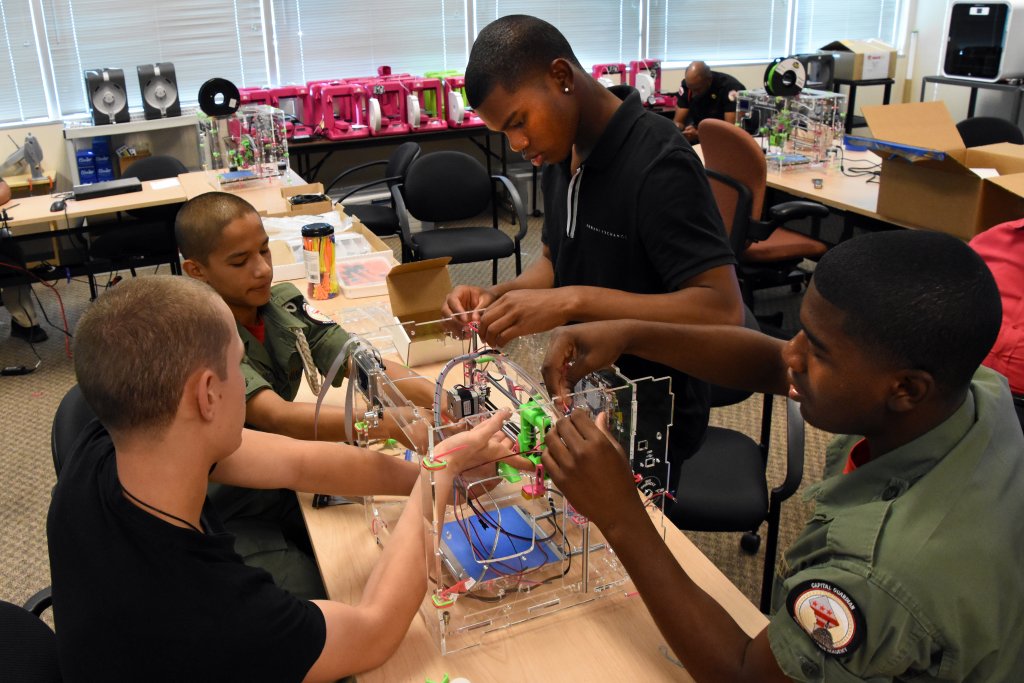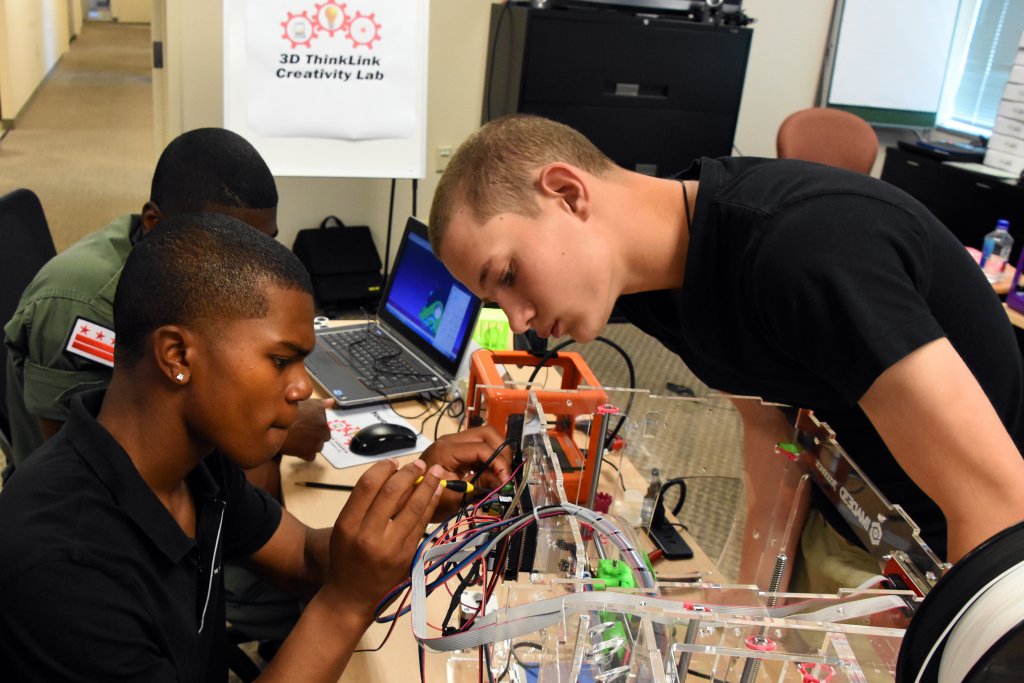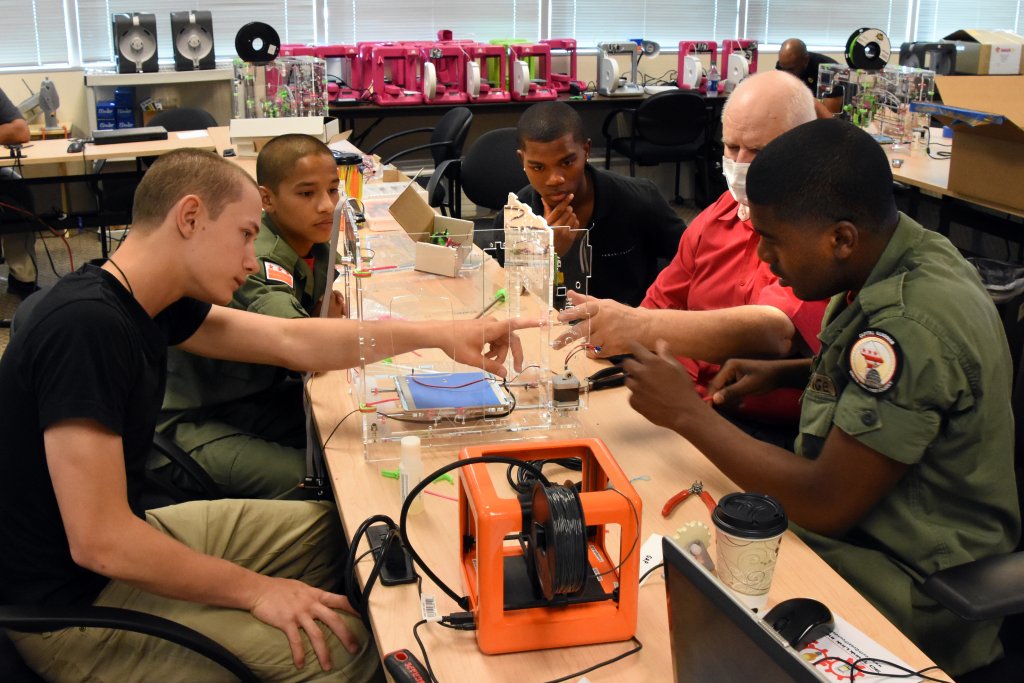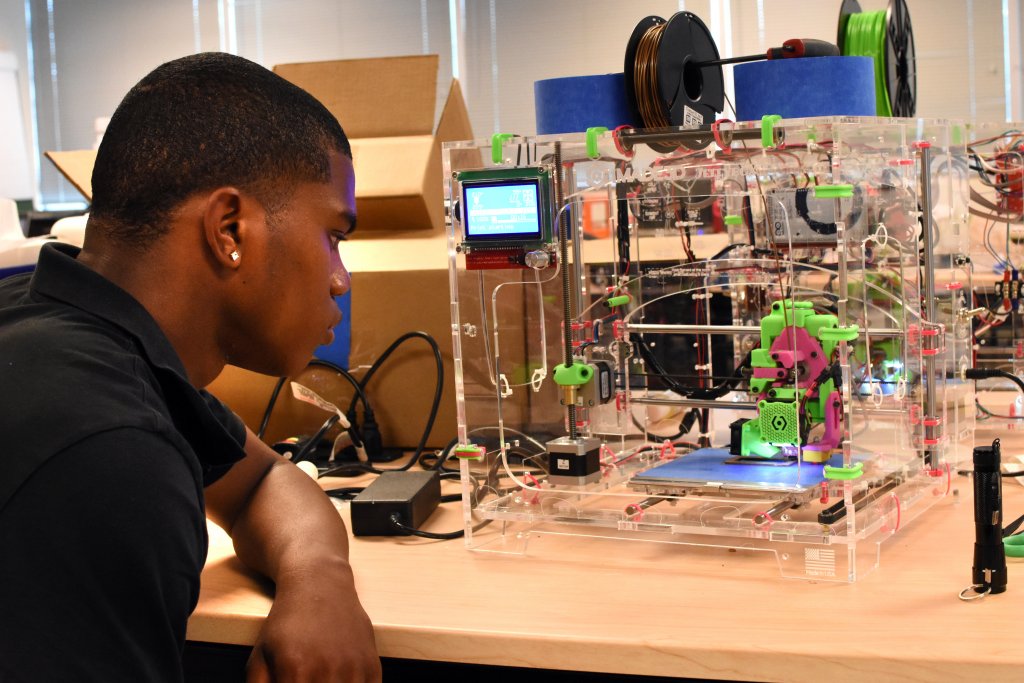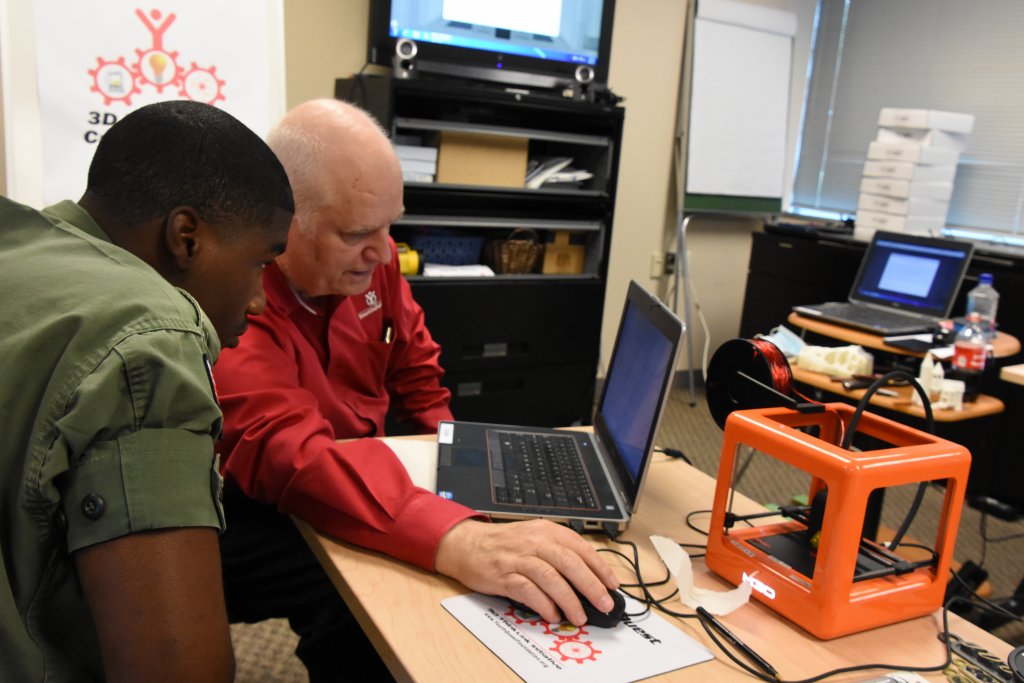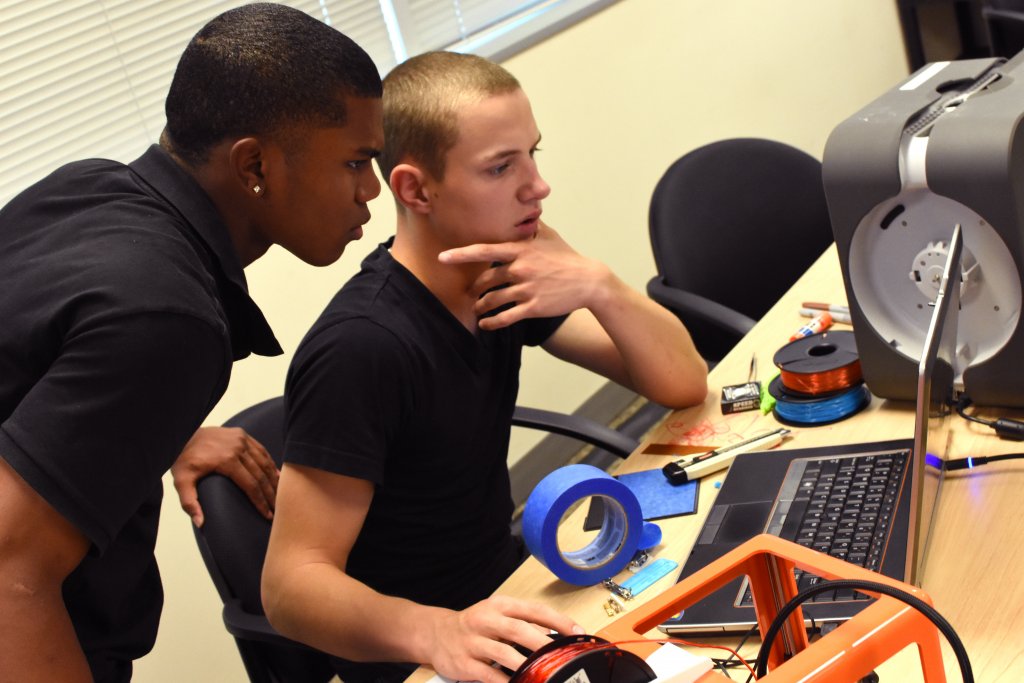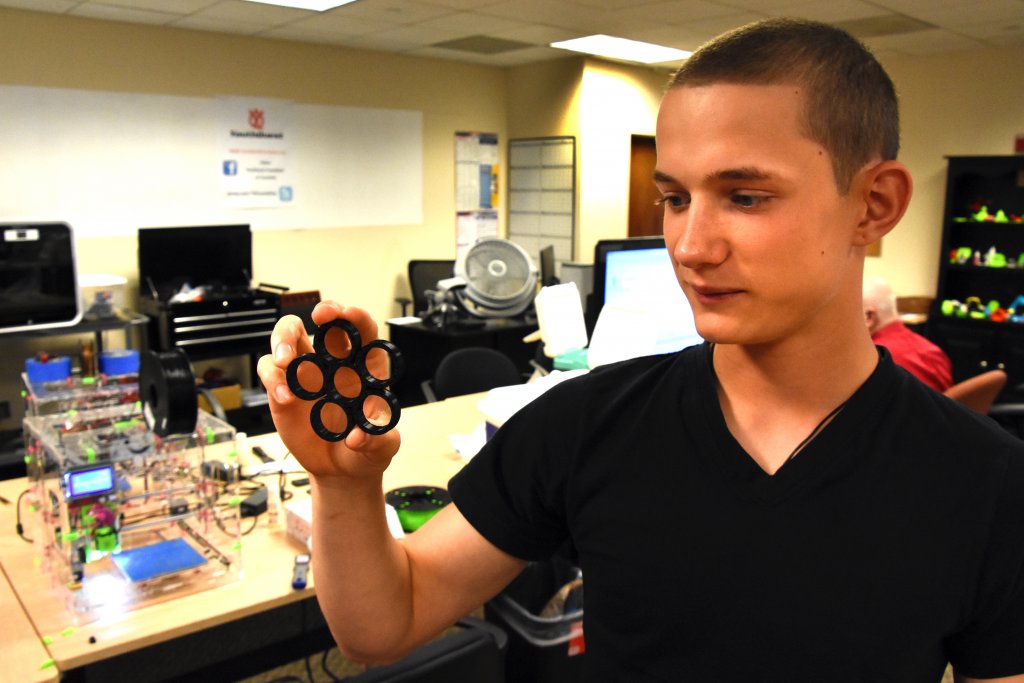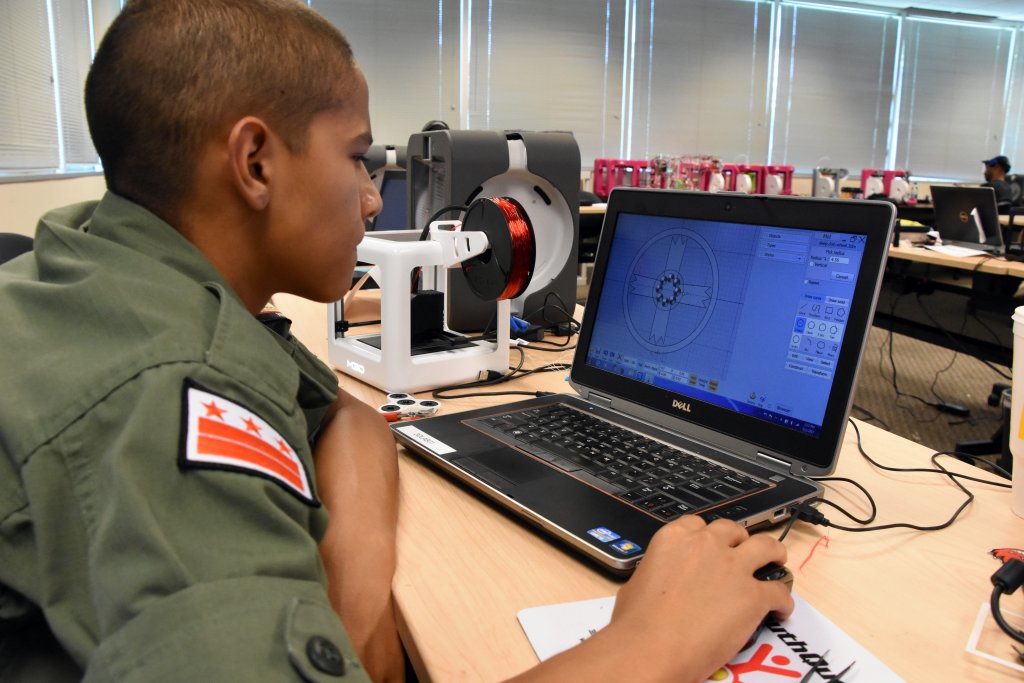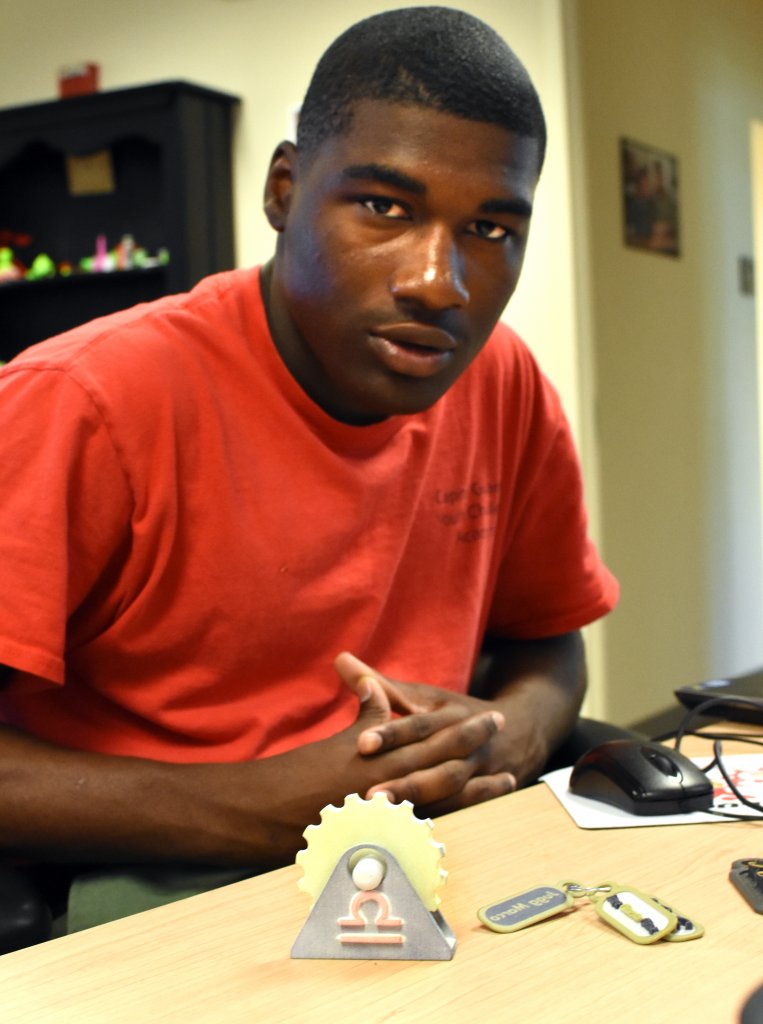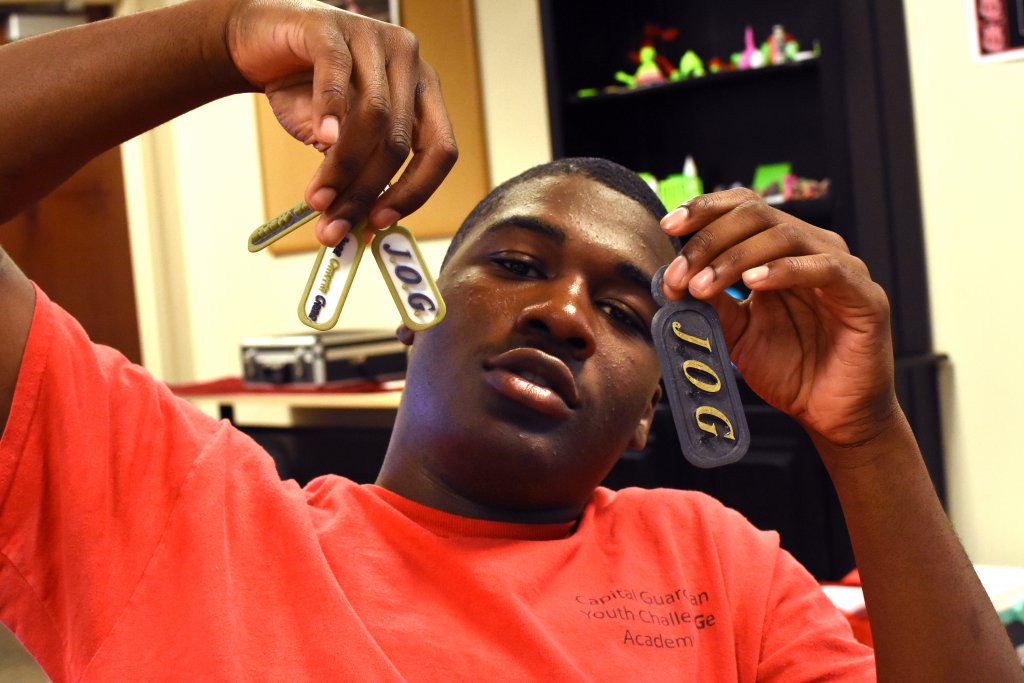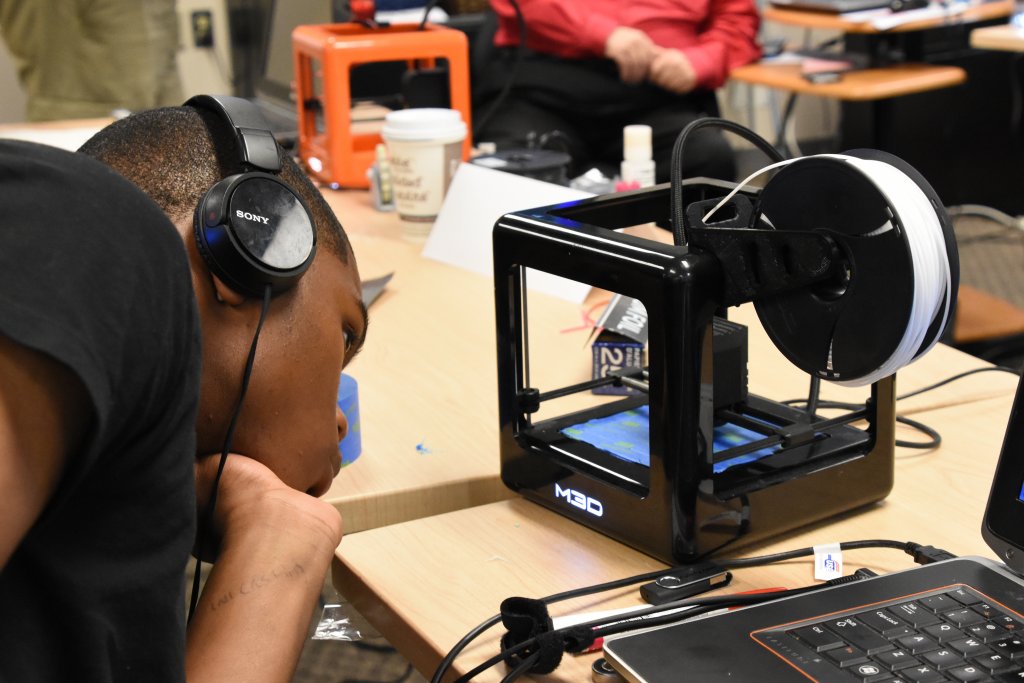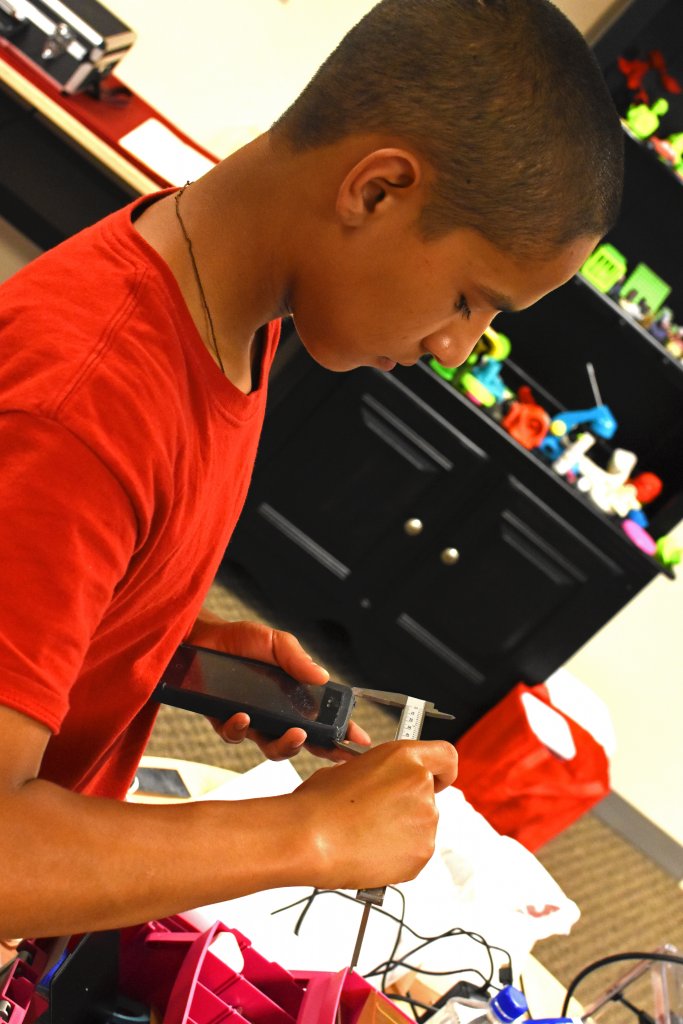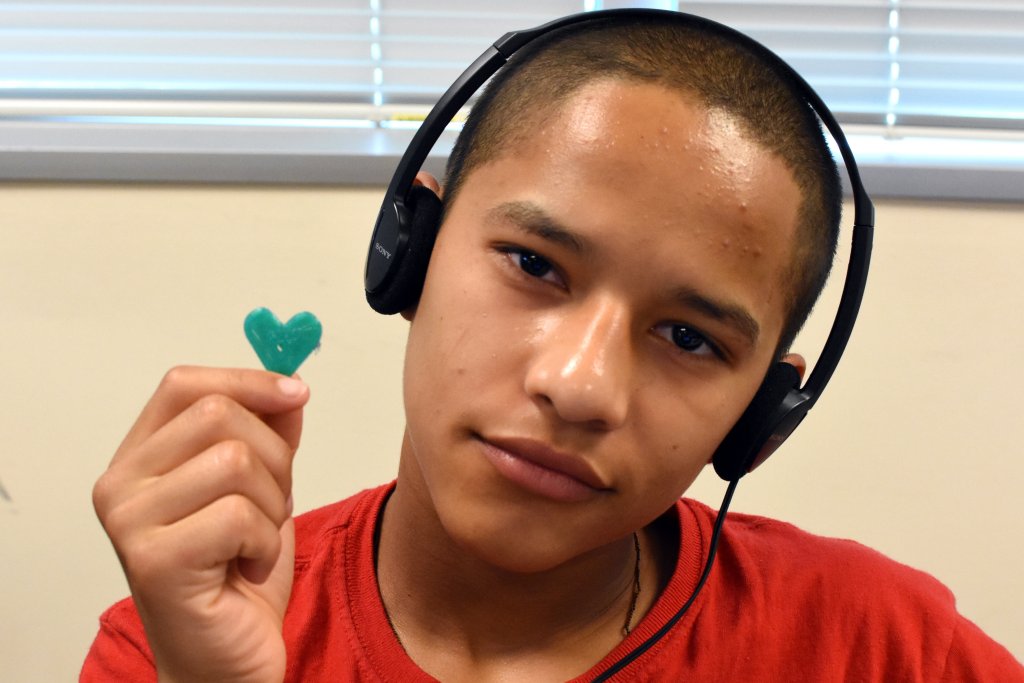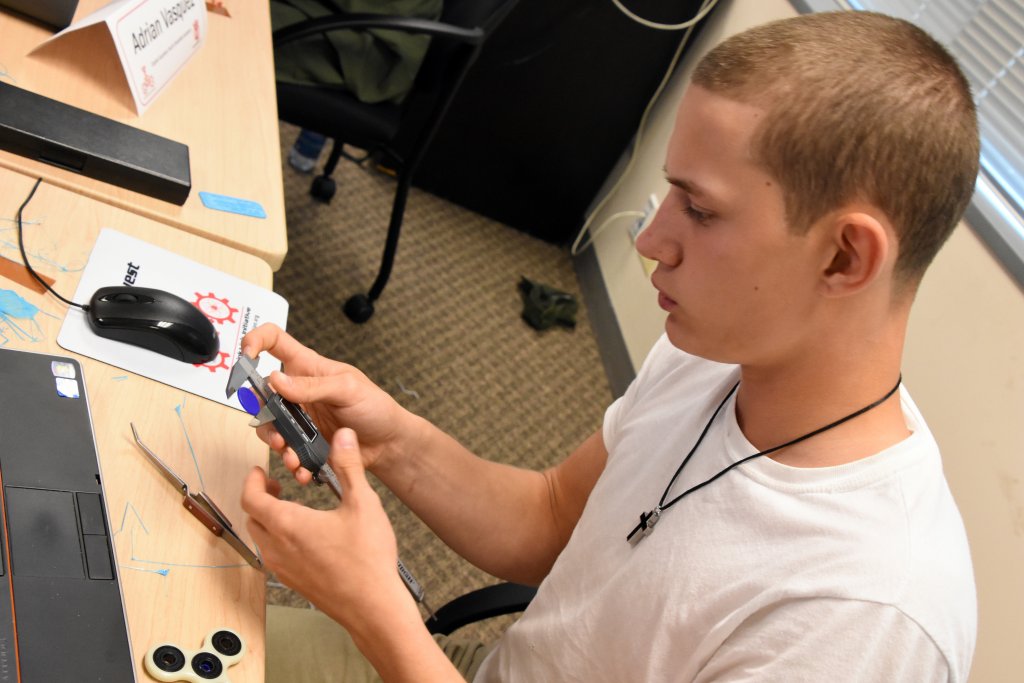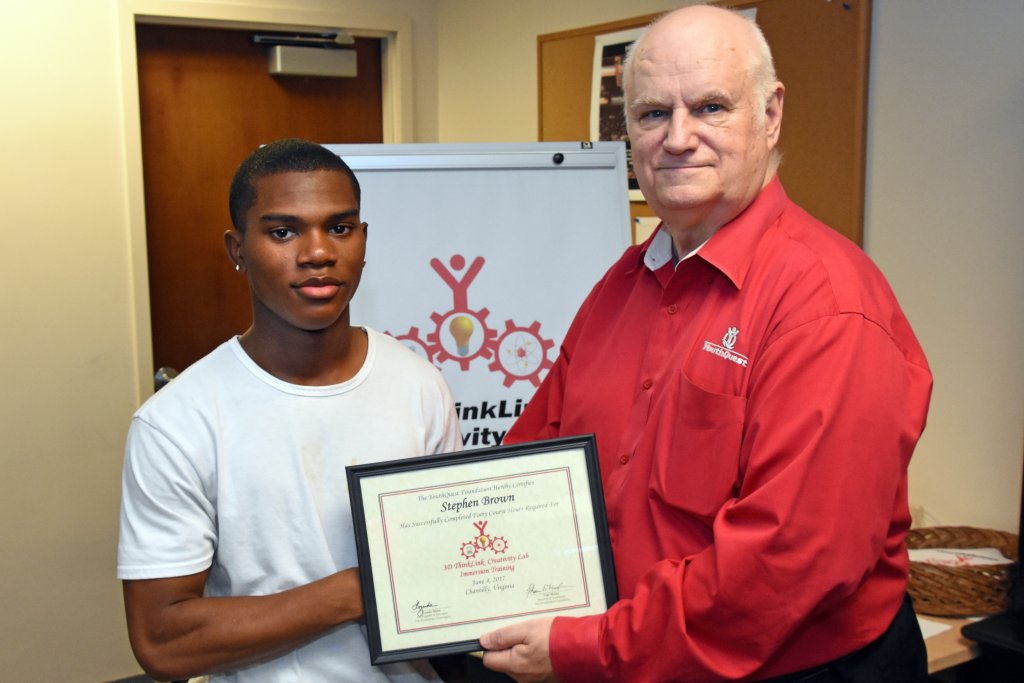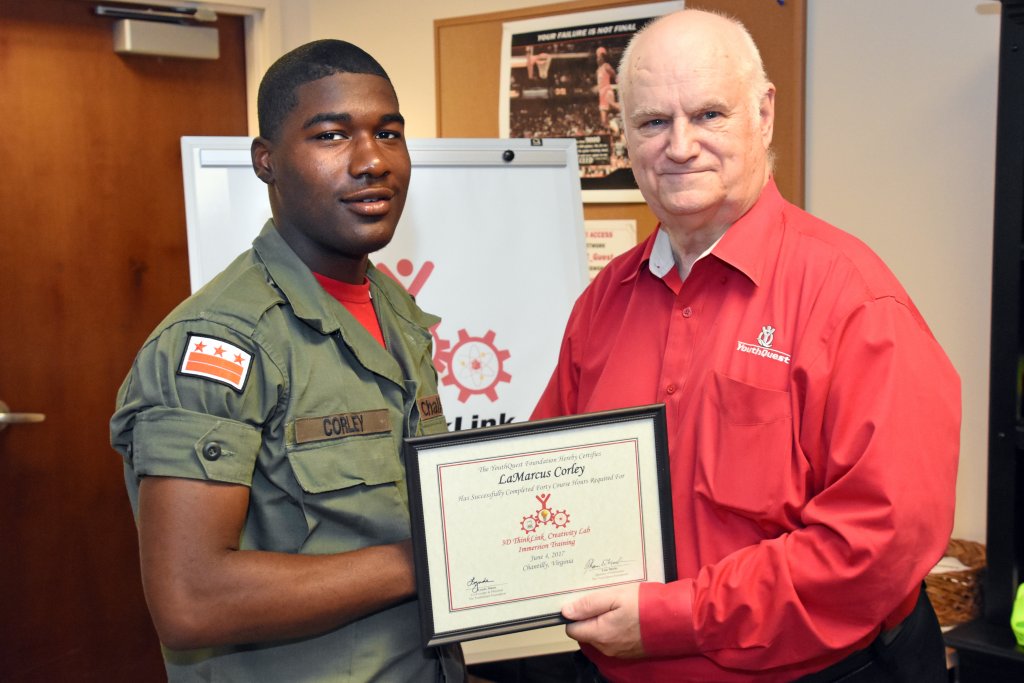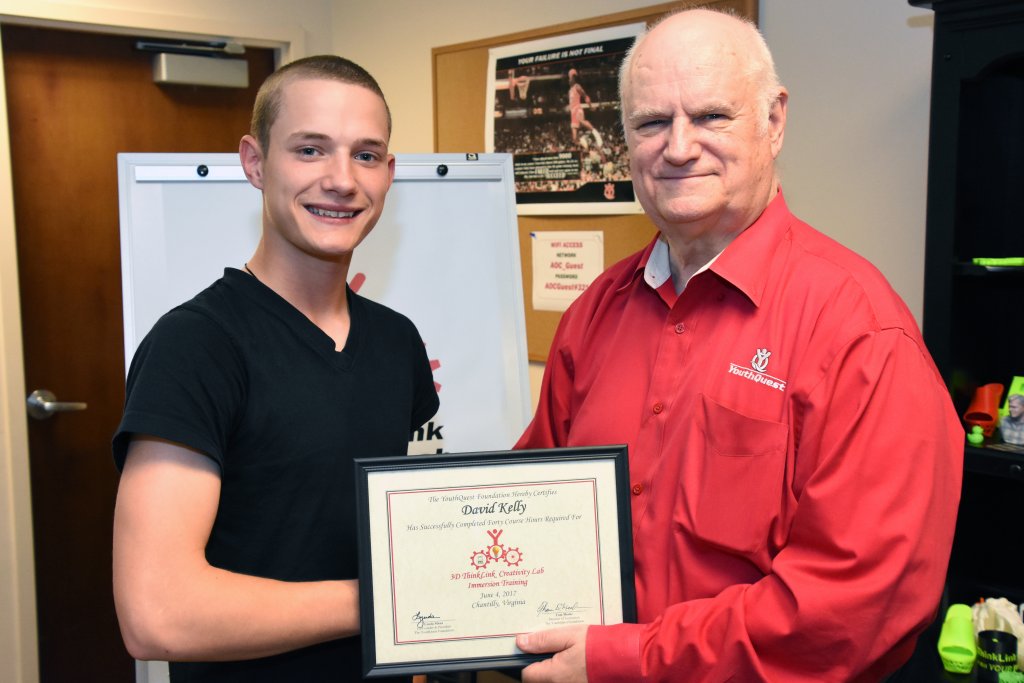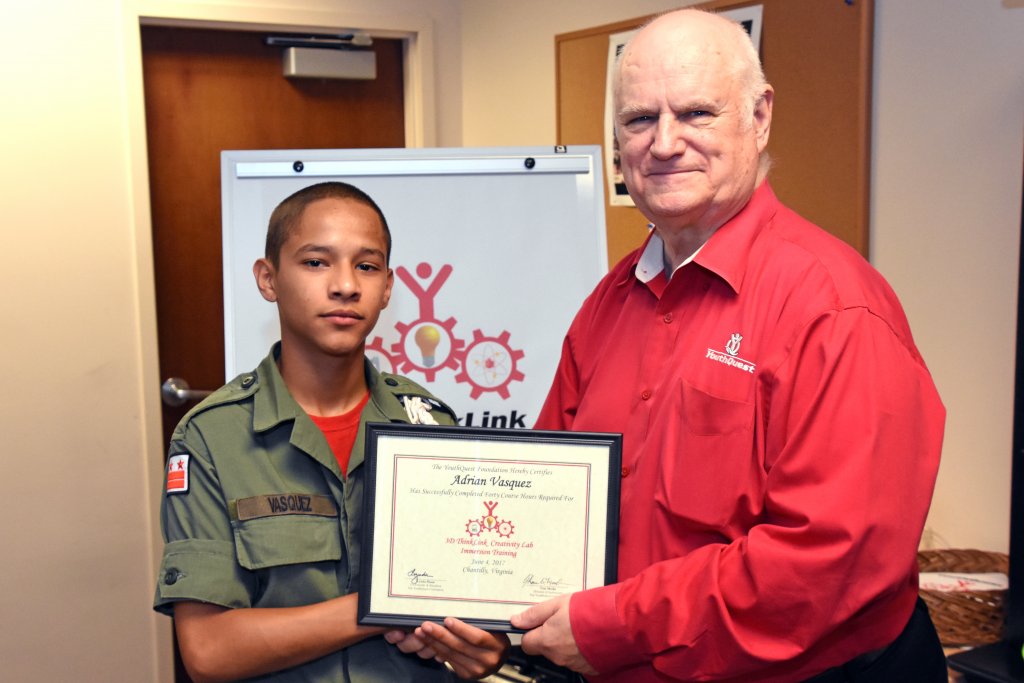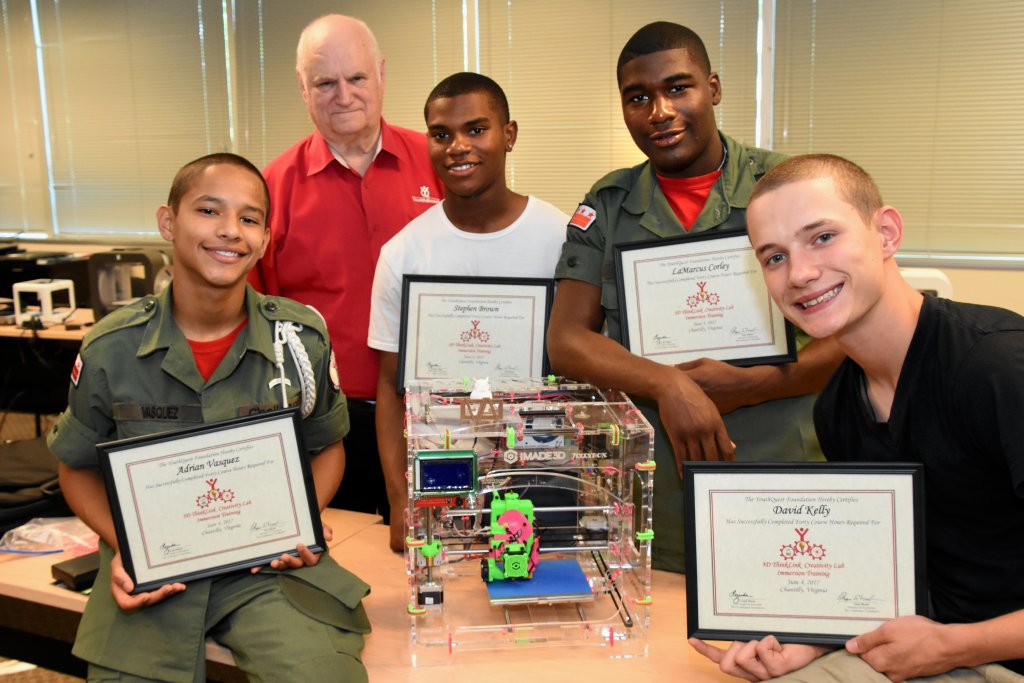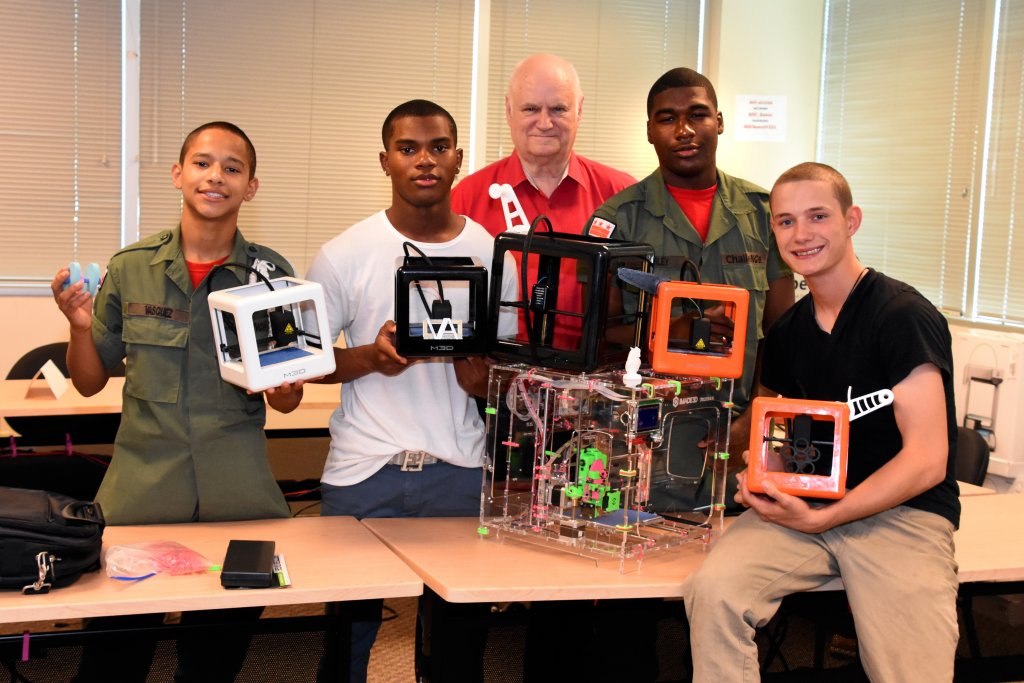Cadets from Maryland’s Freestate and DC’s Capital Guardian Youth ChalleNGe Academies prepared to serve as Youth Mentors during a week of immersion training in YouthQuest’s 3D ThinkLink Creativity Lab this month.
“As far as I’m concerned, this was the most successful immersion experience we’ve done,” said YouthQuest Director of Instruction Tom Meeks. “We were totally focused this time on how to use their skills to be mentors to young people in their families and neighborhoods, and how to work in the community to demonstrate what 3D design and printing is.”
The 3D ThinkLink Initiative uses instruction in 3D design and printing as a vehicle for teaching at-risk youth about critical thinking, problem solving, creativity and confidence. The Youth ChalleNGe Program, run by the National Guard, gives dropouts a second chance to get their lives back on track and earn a high school degree.
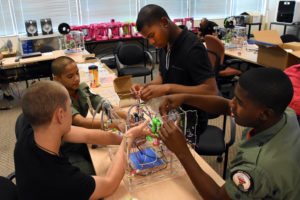
For teens who have struggled in school, the experience of learning something cool like 3D printing and teaching it to others does wonders for their self-esteem.
“Now I can do things to help people who were in my shoes,” said Freestate Cadet David Kelly, 16, from Baltimore.
During daylong sessions in the lab, our advanced students became thoroughly familiar with the setup, operation and troubleshooting of the M3D Micro 3D printers they’ll be using as mentors. They also worked with new types of materials they hadn’t used in their on-campus classes, such flexible and color-changing filaments.
For the first time, the students made designs to be built in the lab’s full-color powder bed printer, so they could experience a professional level of 3D printing.
Staying motivated all week was no problem for these students. After a full day in the lab, they would take their laptop computers back to their hotel rooms and work on designs until 9:00 or 10:00 at night, then come back the next morning eager to print their creations.
‘It’s Like Therapy’
All four cadets said being involved in our program benefited them in ways that go far beyond gaining technical skills. They described 3D ThinkLink class as a respite from the regimented life at their ChalleNGe academies, where they spent 5 ½ months away from home.
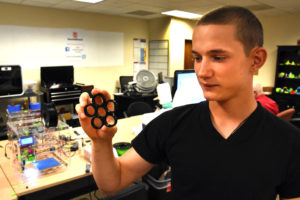
David explained that he would get frustrated in other classes sometimes, but having the opportunity to use his imagination and design whatever he liked in 3D class every week always made him feel better.
“Making stuff calmed me down,” he said. “Whenever I make new things, I generally get happy. It lightens my mood.”
The same was true for Capital Guardian Cadet LaMarcus Corley.
“It has helped me control my anger,” the 17 year old from Washington, DC, wrote in a scholarship-winning essay about his 3D ThinkLink experience. “When I come to class, my whole mood changes. I become happy because I know that I’m in a good place.”
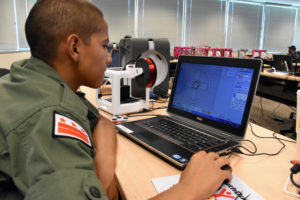
LaMarcus also said our class brought out the creativity he used to keep “all bottled in” and taught him how to “think about stuff differently.”
“It helped me with focusing more — paying attention to detail, getting everything right,” said Freestate Cadet Stephen Brown, 16, from Upper Marlboro, Maryland. “It taught me to never give up and to focus on your goal.”
It also helped keep them out of trouble. All the cadets said they appreciated being chosen for the 3D ThinkLink program and enjoyed it so much that they wouldn’t risk being kicked out for misbehaving.
Before he enrolled at Capital Guardian, Cadet Adrian Vasquez said, he had problems in school.
“I would get good grades, but my mind would always be on something else. So I got caught up with stuff I wasn’t supposed to be around,” the 16-year-old from DC said. “But ever since I started 3D, my mind has been nowhere near that stuff.”
“It’s like therapy, a type of therapy. Working on 3D designs keeps me focused, not on the other nonsense stuff,” Adrian explained.
“And my mom is cheering me on,” he added. “She’s seen all the posts about us on Facebook and she’s never been so happy. She knows the rough times I had.”
Thinking Differently About the Future
The 3D ThinkLink experience opened these at-risk teens’ eyes to new opportunities and changed their view of what’s possible for them.
“I’ve never really been so confident about the things I’m doing,” said Adrian, who plans to become a master automotive technician.
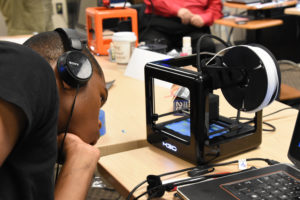
Stephen is aiming for a career as a fashion designer and entrepreneur. With 3D printing playing an ever-increasing role in the fashion industry, he realizes the value of the hands-on experience he gained in our classes.
“It really helped me think outside the box and I can use that to my advantage in the future,” he said. “As I pursue my career, the 3D printer will really help me print out prototypes of designs.”
Learning 3D printing gave LaMarcus a new perspective about his options after graduating from Capital Guardian and he’s looking forward to being a Youth Mentor.
“I know it changed me, so I want to make a change in people’s lives,” he said.
So does Adrian, who was reminded of the importance of giving back when he discovered how 3D-printed prosthetic devices help people who’ve lost limbs.
“I had a mindset thinking that this was just for me or for my family,” he explained. “It’s not always for yourself. You can always improve someone else’s life.”
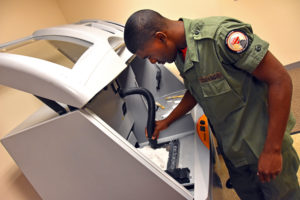
The work these students do as Youth Mentors will support YouthQuest’s goal of reducing America’s dropout rate.
David hopes the children he reaches will share his excitement about 3D printing and decide to learn more about it.
“This isn’t easy stuff. There’s a bunch of math in it, so you really have to stay in school to understand this,” he said.
David added that he’s eager to inspire younger kids “because they’re going to be the future for us.”
“I understand I’m the future now, but they’re going to be the future for me.”
